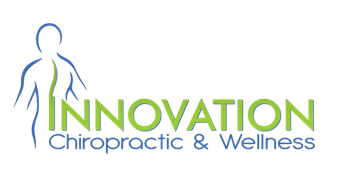If you don’t see the term you’re looking for, please feel free to contact our office and we’ll be more than happy to assist you.
Activator Technique
Classified as a light force technique. Uses a small hand held instrument which delivers a quick and precise adjustment to the spine to help restore proper mobility. Used primarily in patients that do not prefer to have their joints “popped”.
Adjustment (spinal manipulation)
A technique involving the application of gentle, yet firm, pressure to a joint. The goal of any adjustment is to restore the joint to its natural, or original, position; correcting alignment, mobility, and function.
Arthritis
The inflammation of one or more joints of the spine and/or extremities.
Bulging Disc
A compression of the cushions in the spine that can put pressure on, or irritate, the spinal nerves.
Bursitis
A condition in which the bursa, or fluid filled sacks that cushion joints, become swollen and inflamed.
Cervical Spine
The neck, or upper spinal area, consisting of seven vertebrae. These nerves innervate areas of the head, face, sinuses, ears, neck & upper extremities, among various other functions.
Chiropractic
The science, art and philosophy of treating the spine and joints of the human frame to create a healing response in the nervous system allowing your body to heal itself. The practice of chiropractic focuses on the relationship between structure (primarily the spine and other joints of the body) and function (as coordinated by the nervous system) and how that relationship affects the preservation and restoration of health.
Chronic Pain
Pain that is experienced constantly (everyday).
Corrective Care
Focuses on addressing the imbalances in the body through continued adjustments, along with massage and rehabilitative exercises focusing on increasing muscle strength and balance.
Decompression
Spinal Decompression Therapy is a term that describes the relief of pressure on one or many pinched nerves or neural impingement of the spinal cord.
Degeneration
A wear and tear phenomena, usually due to chronic pressure and imbalances in the body. When the spine and joints of the body wear out, it is referred to as osteoarthritis, also known as
degenerative joint disease.
Electrotherapy
Electrotherapy pertains to the use of electrical stimulation on the body. It may be used to control pain, increase blood and lymphatic circulation, reduce muscle spasm, relax or stimulate the nervous system or aid in the healing process.
Flexion/Distraction (Disc Traction) Technique
A technique which pulls bulging inter-vertebral discs and tissues away from the spinal cord and the spinal nerves. This technique incorporates a special table that breaks away and flexes downward while performing the tractioning maneuver.
Functional Medicine
Medical approach that addresses the underlying causes of disease, using a systems-oriented approach.
Herniated Disc
A vertebral disc in which the inner portion has protruded and possible causing pressure/irritation on spinal nerve(s).
Inflammation
The body’s response to injury, which can cause pain, heat, redness, swelling and loss of function, and is almost always caused by any underlying issue.
Lumbar Spine
The lower spinal region making up the low back consisting on 5 vertebrae. These nerves innervate the digestive system, bladder, sex organs, prostate, muscles of the lower back, legs, knees,
ankles and feet, among other functions.
Massage Therapy
A therapy that stimulates the muscle tissue, releasing toxins and lactic acid, promoting oxygenated blood throughout the body.
Migraines
A more severe form of headache, usually a throbbing or stabbing pain in one or more areas of the head that can also cause vomiting, nausea, and sensitivity to lights and sounds.
Muscle Spasm
The muscles in our bodies must work together to control even the simplest of movements. Muscles work in conjunction with joints and bones to provide motion. When we become misaligned and irritated, it disrupts the nerve-muscle relationship and causes a muscle spasm.
Physical Therapy
The utilization of various exercises in order to strengthen, balance and stabilize the body.
Plantar Fasciitis
An inflammation on the thick band of tissue that runs along the bottom of the foot, connecting the heel to the toes.
Radiology
The use of x-rays to determine pathology (cancer, tumors, osteoarthritis, osteoporosis etc.) fractures, short leg deficiencies and spinal subluxations (misalignment).
Range of Motion
The range, measured in degrees of a circle, through which a joint may be moved. A decrease in range of motion may indicate a problem with that joint or muscle group.
Relief Care
Focuses on getting the patient out of pain. Will be comprised of adjustments, decompression, muscle stimulation, massage therapy, among other therapies to reduce pain and inflammation in the body.
Sciatica
Pain that may be felt in the low back, buttocks, hip, leg and/or foot. Symptoms are caused by pressure or irritation on nerves in the lower back spine.
Spinal Stenosis
Spinal stenosis is a narrowing of the open space surrounding your spinal cord and the nerves that travel through the spine. Most often occurring in the neck and lower back, spinal stenosis can cause pain, numbness, muscle weakness, and problems with bladder or bowel function, among many other symptoms.
Subluxation
The misalignment of the joints that make up the spine, causing pressure or irritation on the spinal nerves producing pain, numbness, muscle weakness, and/or many other symptoms.
Tension Headaches
Headaches caused by tension or fatigue in the muscles of the neck and shoulder that attach to the back of the head, which causes band like pressure or pain in the head.
Trigger Points
A generally small area of a muscle that is inflamed and causing the muscle to feel “tightly knotted” and in spasm. These areas may have the ability to “send” pain to another area of the body, this is referred to as referral pain.
